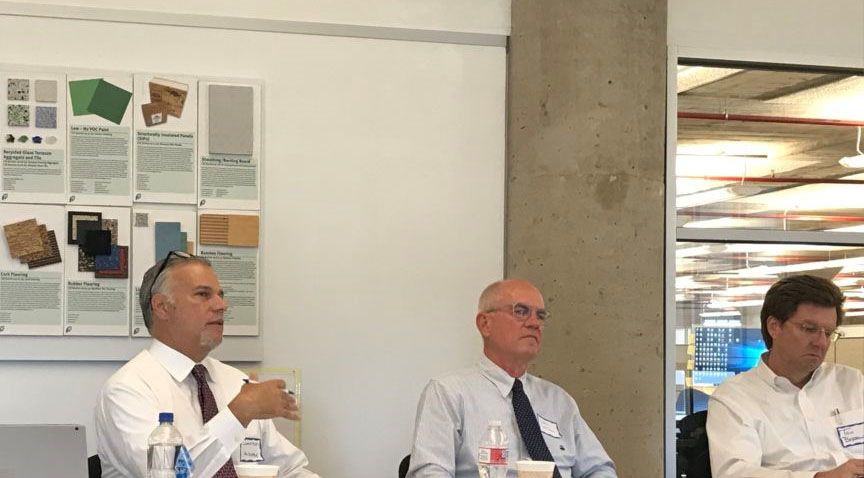 In Houston, a community still rebuilding following Hurricane Harvey in 2017, two dozen sustainable and resilient design industry leaders came together to discuss how to rebuild better. Autocase hosted its third Autocase Advisory Group (AAG) event at the Green Building Resource Center to discuss how to make the business case for resiliency — the ability to withstand more frequent and more severe storms.
In Houston, a community still rebuilding following Hurricane Harvey in 2017, two dozen sustainable and resilient design industry leaders came together to discuss how to rebuild better. Autocase hosted its third Autocase Advisory Group (AAG) event at the Green Building Resource Center to discuss how to make the business case for resiliency — the ability to withstand more frequent and more severe storms.
The AAG in Houston followed similar events in Los Angeles and Washington, DC with experts discussing industry trends, learning from each other’s experiences and sharing opinions on future directions. We use these discussions to improve and set direction for our products: Autocase for Buildings and Autocase for Sites.
The AAG featured three speakers:
- Julie Hendricks, Vice President and the Director of EcoServices at Kirksey Architecture;
- Steve Stelzer, Program Director CE Green Building Resource Center at the City of Houston; and
- Mikel Wilkins, Founder and Principal of Urban Ecoplan

Communicating the value of sustainability to clients and those affected by a project was a central discussion point. It was noted that a professional passion for sustainability does not necessarily yield the ability to convey the value of a design effectively. Designers must speak the language of developers — dollars and cents — in order to demonstrate why sustainable design should be used over other options.
The AAG also outlined the necessity of framing a sustainable or resilient design in terms that are convincing and relevant to stakeholders. There was general agreement that introducing new ideas can be a challenge, especially in relation to technical topics.

Hendricks detailed why it’s so challenging to change people’s preconceived ideas. Facts can be helpful, but only in instances where an individual doesn’t already have a strong opinion about a subject, she noted. There is actually a science behind persuasion, she explained, and one key tactic involves storytelling — which activates brain function and sets the stage for someone to consider a change in their thinking.
With some communities being submerged by extreme flooding events for the third time in as many years, the pressure is mounting not just to replace, but to rebuild and fortify stormwater infrastructure. Engineers are using Hendricks’s persuasion techniques by discussing project plans in terms of how they will deliver benefits to local residents. This allows city leaders to present green infrastructure investments as not just a cost but as making the water cleaner and increasing property values.
Wilkins’ presentation focused on this, noting the use of “multifunctional” design — highlighting the benefits to occupants and community — rather than “green,” which doesn’t convey an immediate stakeholder benefit. Another persuasion technique is to find a “bad guy” in telling the story about green infrastructure. Not a person, but the fallout from certain design decisions (i.e. flood).
Stelzer made a compelling case for eco-literacy and discussed the value of staying abreast of the evolving ideas and thought leadership on this. He demonstrated how he utilizes the most current thinking to support many city green initiatives, ranging from reviewing plans during the permitting process so that green alternatives can be considered to implementing the city’s Climate Action Plan.
Autocase will be used for AAG member projects so that they can tell persuasive stories that compel more sustainable actions.
0 Comments